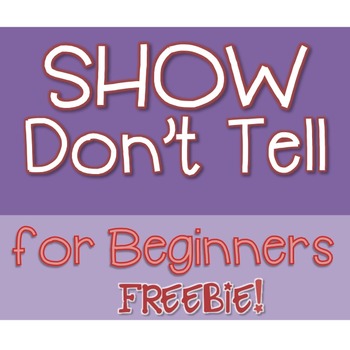 This year will be no exception. The difference is that for the first time in my teaching career, I have only THREE native English speakers in my classroom. After the initial shock of this wore off, I spent the past few weeks barely taking a breath, scrambling to put routines into place that will support these learners through the year, and encourage their independence as soon as possible.
This year will be no exception. The difference is that for the first time in my teaching career, I have only THREE native English speakers in my classroom. After the initial shock of this wore off, I spent the past few weeks barely taking a breath, scrambling to put routines into place that will support these learners through the year, and encourage their independence as soon as possible.I've spent LOTS of time teaching writing, and many of my favorite lessons revolve around showing--not telling--what's happening in a narrative piece. But this year, even my tried-and-true first lesson didn't work with my ELLs, and so I tried something completely different. And it worked! :)
STEP 1: Re(teach) sensory language. Use examples. Get students involved. Assume they don't know what you're talking about when you ask them to describe what something looks like (because they probably don't). Bring in favorite books and characters, and things that have happened in the classroom that they can all relate to.
STEP 2:
Choose a boring sentence that you might see in your students' writing. (In this example, I use the sentence, "I went home.") Without telling the students the boring sentence, stretch it out with descriptive, sensory language, and write it large enough for students to see and study. Read it together.
STEP 3:
Identify the sensory language used in the descriptive sentence. How does the author show, not tell, what's happening? I ask students to turn and talk about their ideas, and then I underline and write the little symbol for the type of sensory language (eyes for what something looks like, etc.)
STEP 4:
Students work together to figure out the boring sentence that I've used sensory language to stretch out and describe. They're so excited to figure it out! :)
STEP 5:
 Give each partnership their own boring sentence to stretch out with sensory language. The goal is for other students to guess the boring sentence from the groups' descriptive language.
Give each partnership their own boring sentence to stretch out with sensory language. The goal is for other students to guess the boring sentence from the groups' descriptive language.Be sure to download the lesson freebie by clicking on the product below! :)



No comments:
Post a Comment